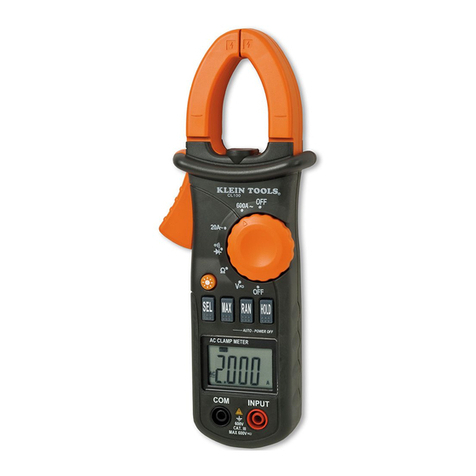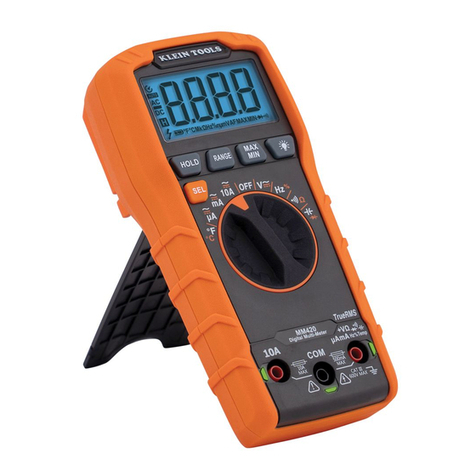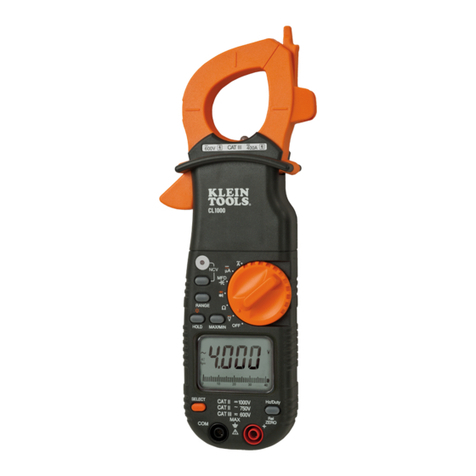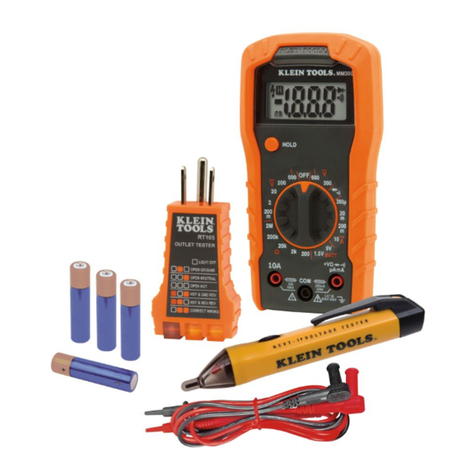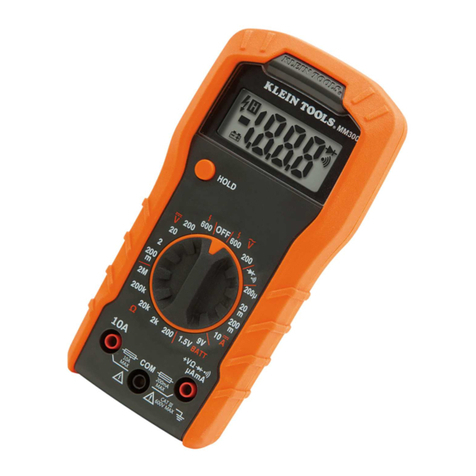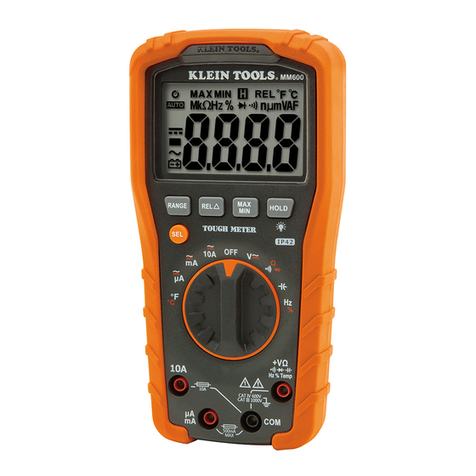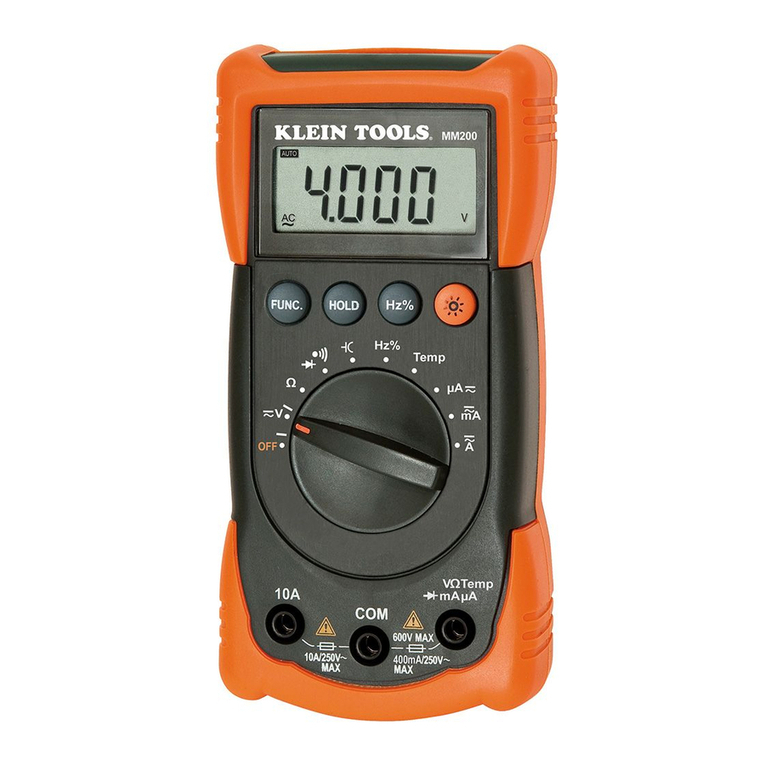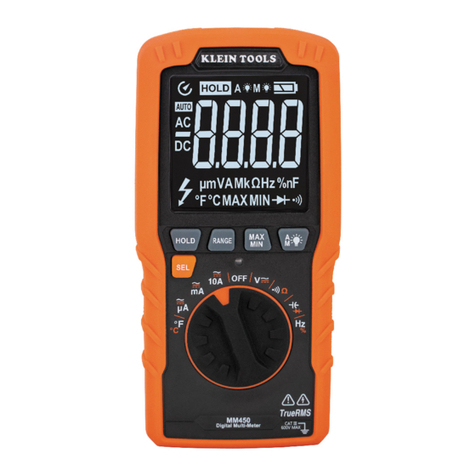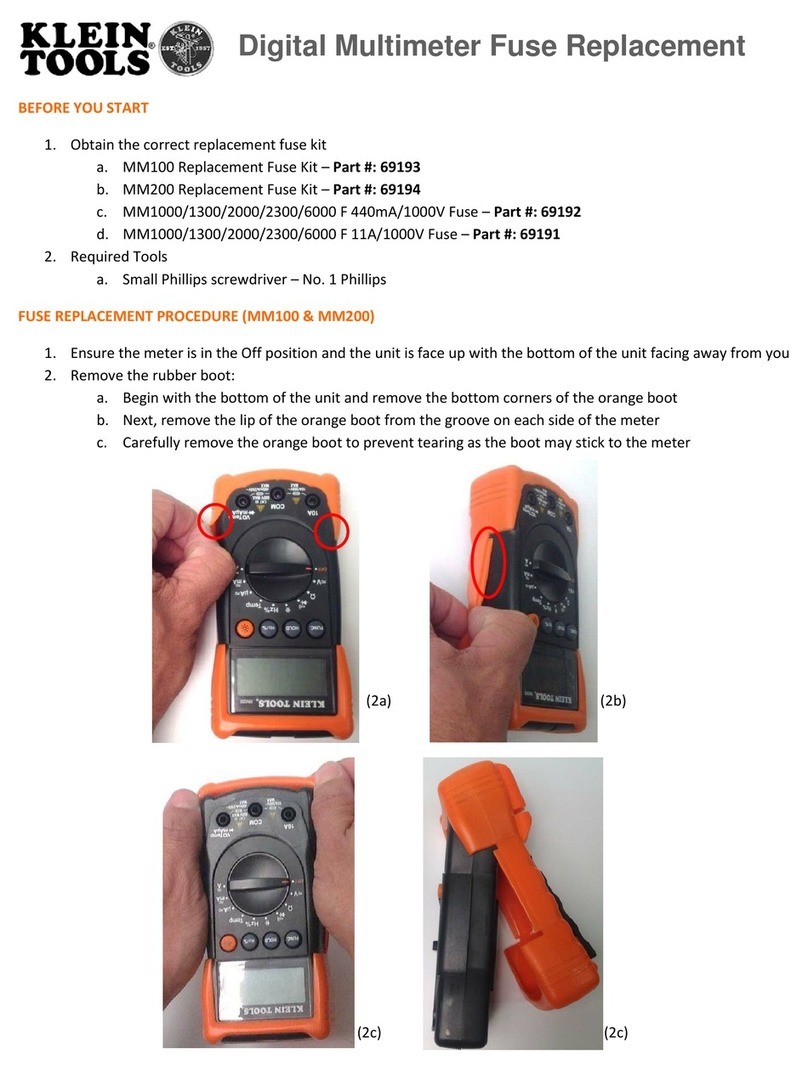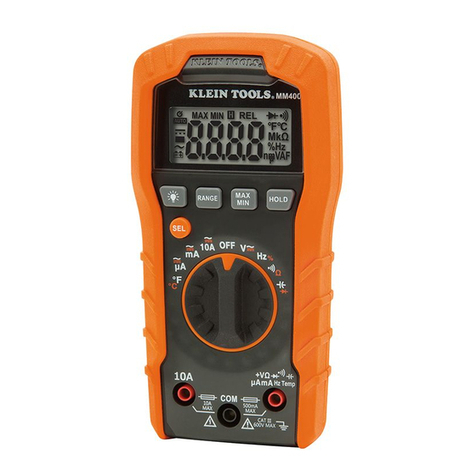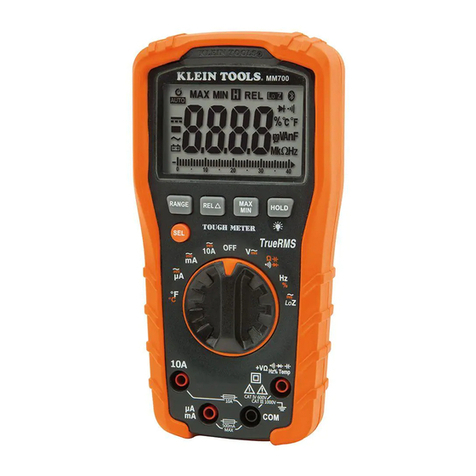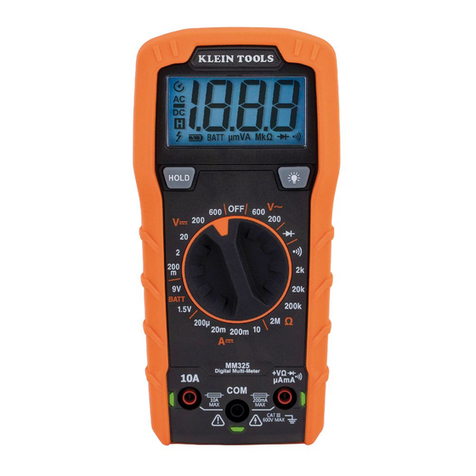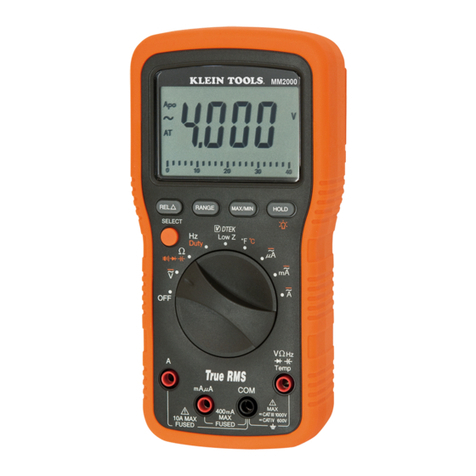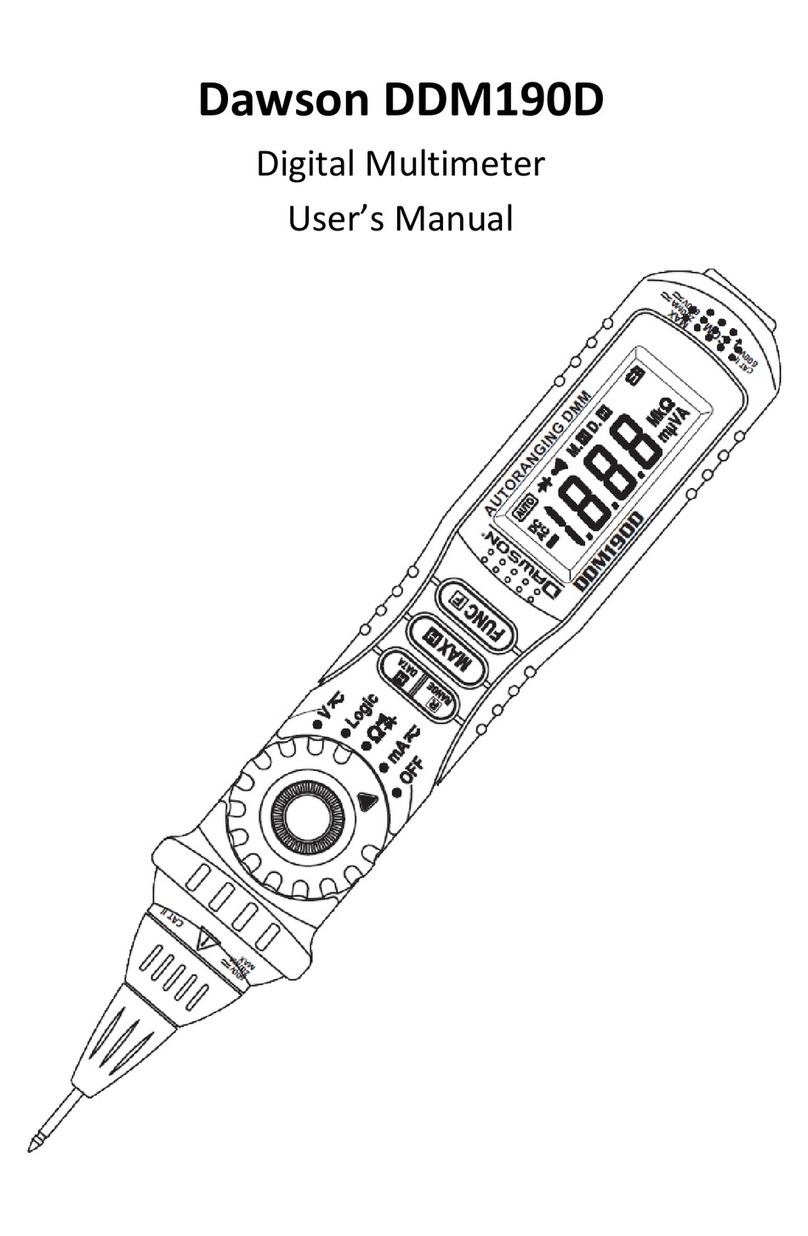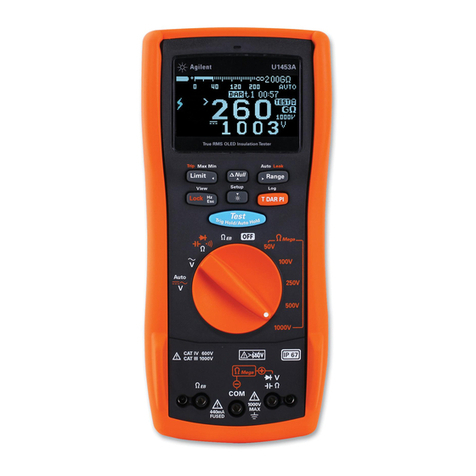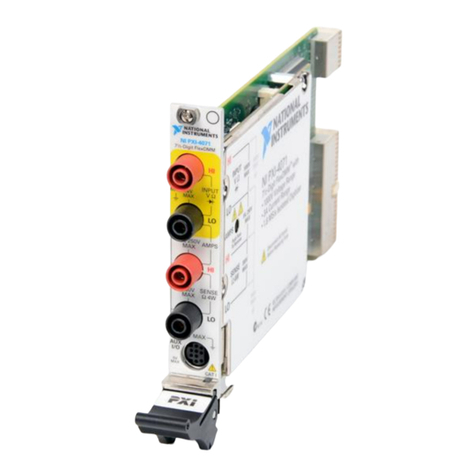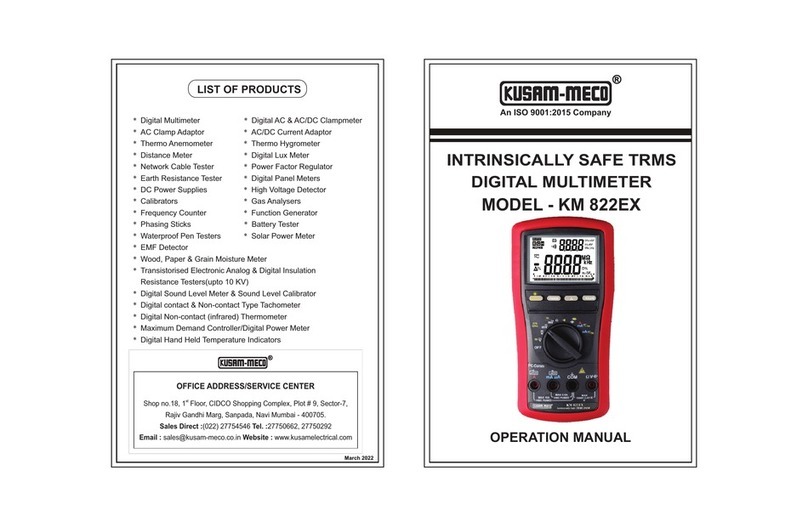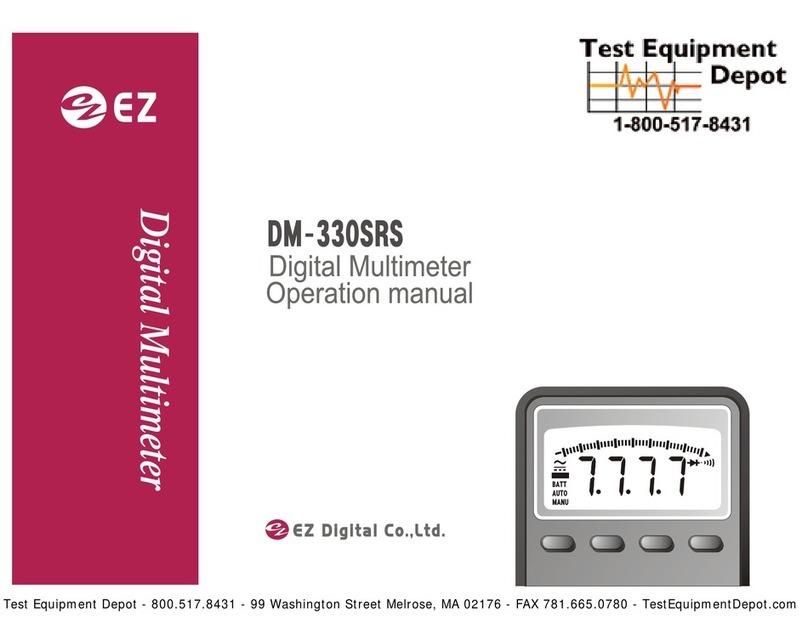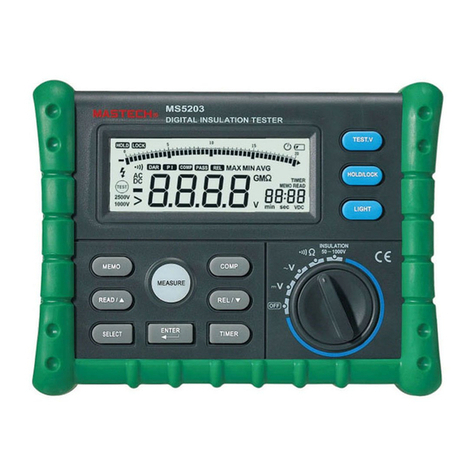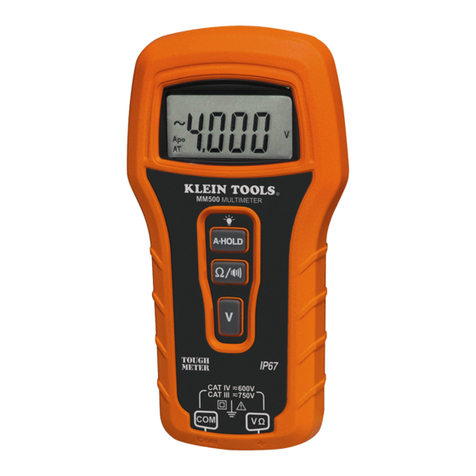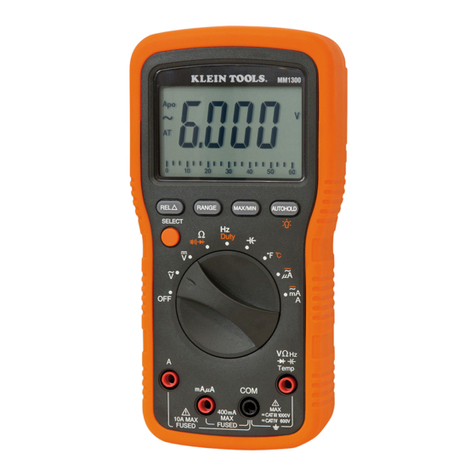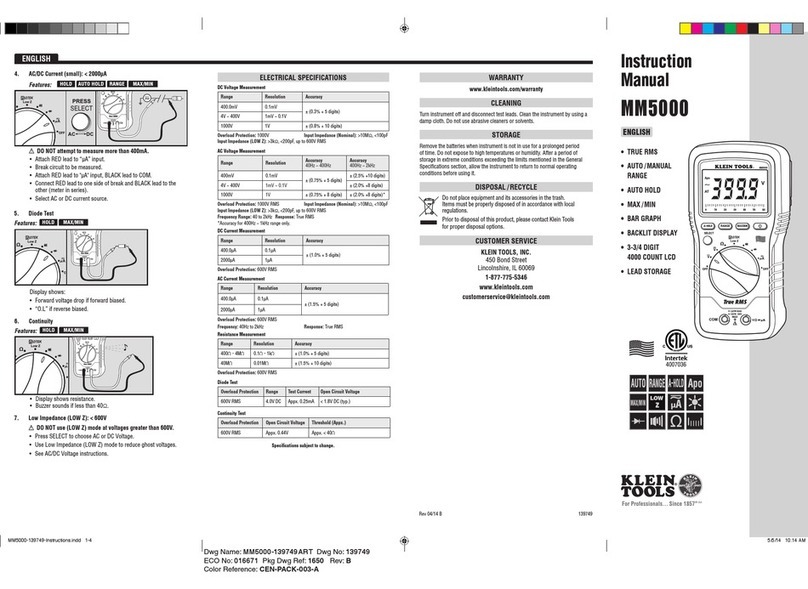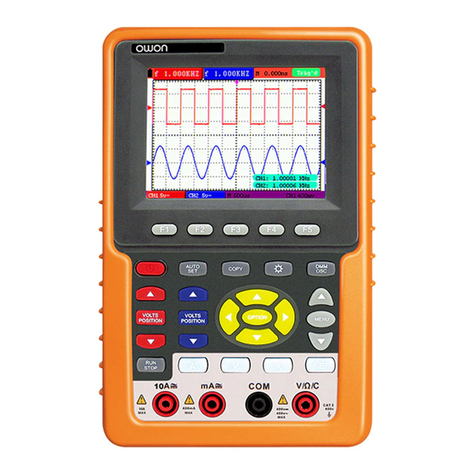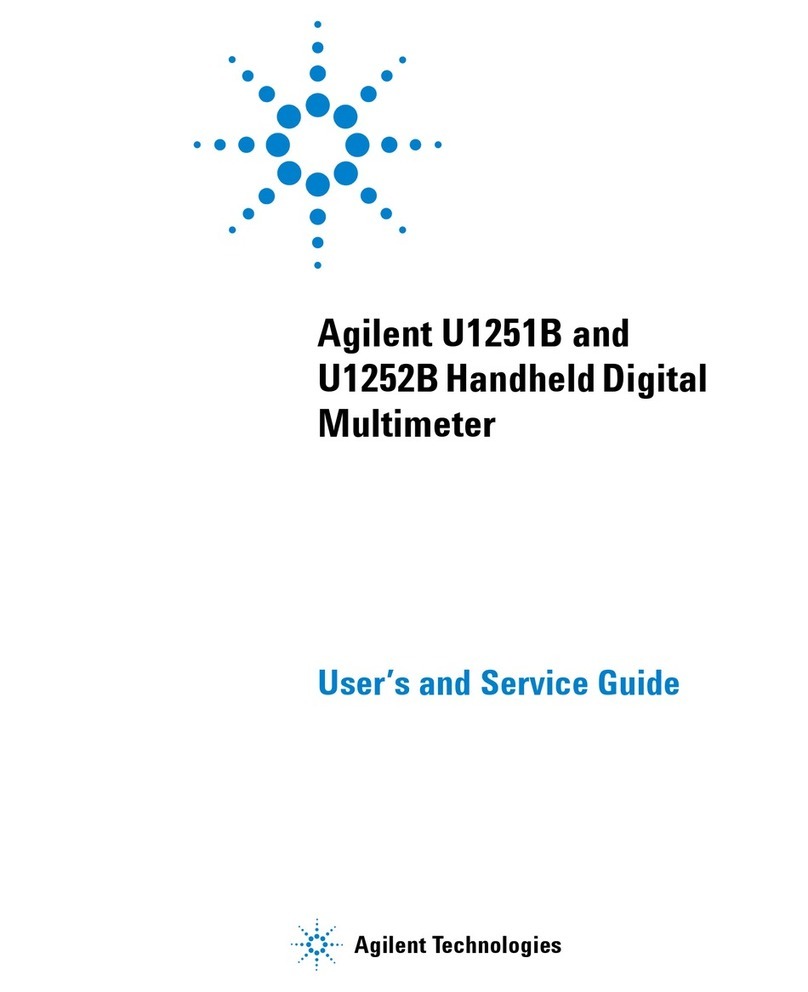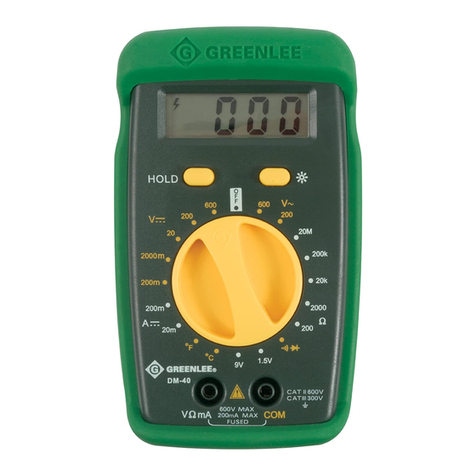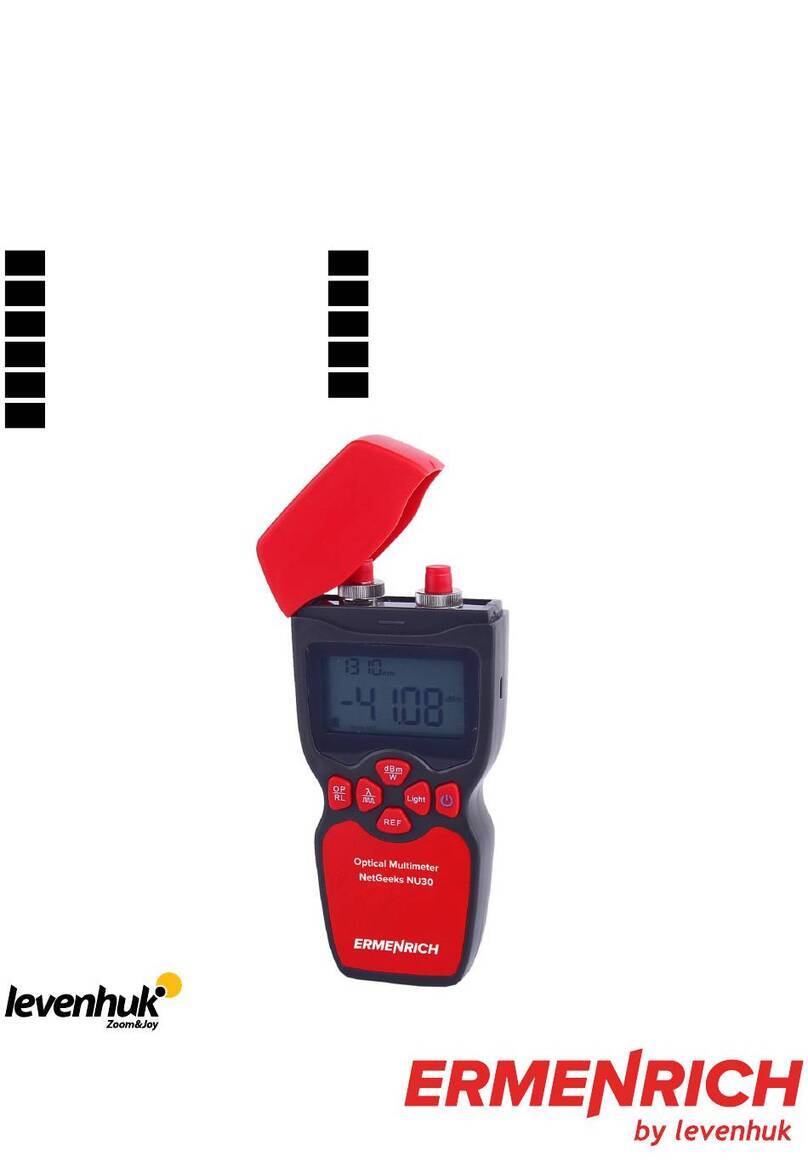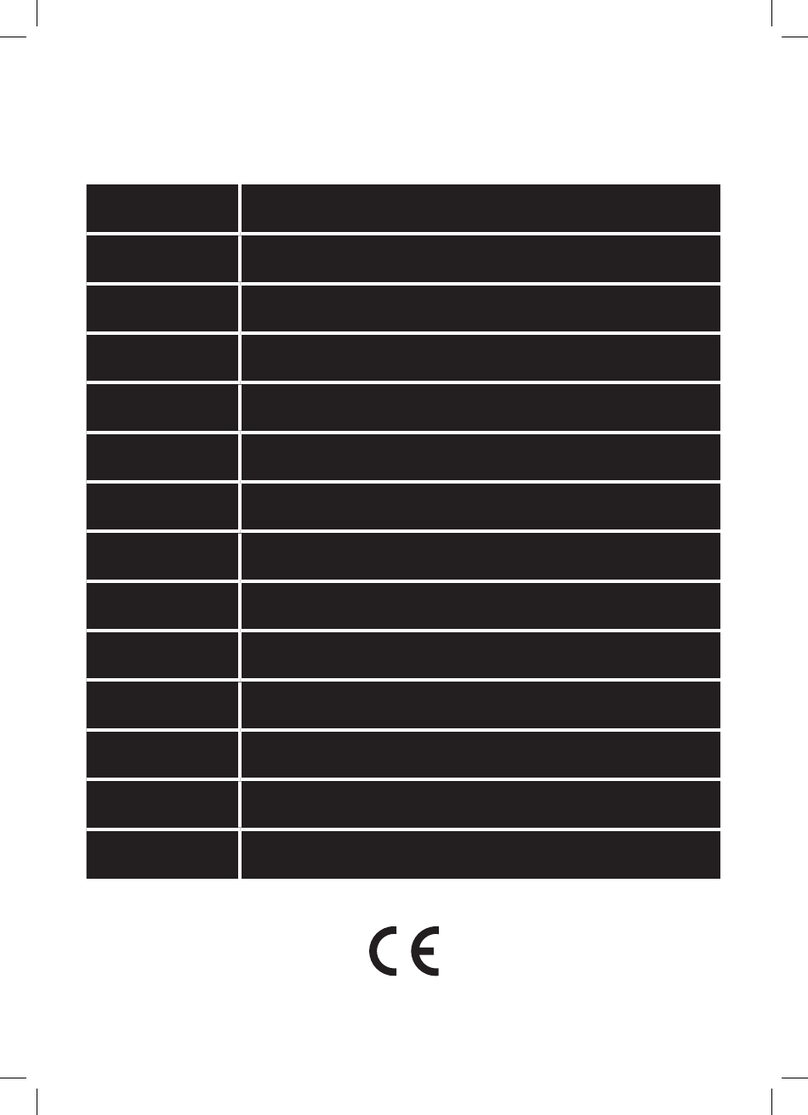Dwg Name: MM100-139569TART Dwg No: 139569T
ECO No: 15144 Pkg Dwg Ref: 1719 Rev: C
Color Reference: N/A
ENGLISH
A.B. Use properly safety rated leads.
A. Do not attempt to measure more than 600V or 200mA.
B. Do not attempt to measure more than 10A.
C. Data Hold
• Press to hold the current input on the display.
• Press again to return to live reading.
D.E. Battery / Fuse Replacement
• When indicator is displayed on the LCD, batteries must
be replaced.
• Remove rubber boot, back screw, and replace 9V battery.
• If more than 200mA is applied to A, replace with 250mA/250V
fast-blow fuse.
• If more than 10A is applied to B, replace with respective 10A /
500V fast-blow fuse.
FUNCTION INSTRUCTIONS
COM
m
10A/500V
~
250mA/250V
~
600V MAX
CATIII
MM100
HOLD
200m
2
20m
200m
20
600
600
200
10A
9V
1.5V
200
2M
200k
20k
200
2k
200
BATT.
B
CE
On Back
D
A
FEATURE DETAILS
MM100
Instruction Manual
GENERAL SPECIFICATIONS
The Klein Tools MM100 is a manual ranging multimeter. It measures
AC/DC voltage, DC current, and resistance. It can also test batteries,
diodes, and continuity.
• Operating Altitude: 2000 meters
• Relative Humidity: 75% max operating
• Operating Temperature: 0°C /32°F to 40°C /104°F < 75% R.H.
• Storage Temperature: -20°C /-4°F to 60°C /140°F < 80% R.H.
• Accuracy Temperature: 18°C /64°F to 28°C /82°F < 75% R.H.
• Temperature Coefcient: 0.1*(specified accuracy) / °C
• Sampling Frequency: 3 samples per second
• Dimensions: 5.91" x 2.76" x 1.97" (150 mm x 70 mm x 50 mm)
• Weight: 8.36 oz. (237 g)
• Calibration: Accurate for one year
• Safety Rating: CAT III 600V
• Listing: ETL & cETL standard UL 3111-1 listed
• Pollution Degree: 2
• Accuracy: ± (% of reading + # of least significant digits)
WARNINGS
To ensure safe operation and service of the tester, follow these instructions.
Failure to observe these warnings can result in severe injury or death.
• Before each use, verify meter operation by measuring
a known voltage or current.
• Never use the meter on a circuit with voltages that exceed the
category based rating of this meter.
• Do not use the meter during electrical storms, or in wet weather.
• Do not use the meter or test leads if they appear to be damaged.
• Ensure meter leads are fully seated, and keep fingers away from
the metal probe contacts when making measurements.
• Do not open the meter to replace batteries while the probes
are connected.
• Use caution when working with voltages above 60V DC,
or 25V AC RMS. Such voltages pose a shock hazard.
• To avoid false readings that can lead to electrical shock,
replace batteries if a low battery indicator appears.
• Unless measuring voltage or current, shut off and lock out
power before measuring resistance or capacitance.
• Always adhere to local and national safety codes. Use individual
protective equipment to prevent shock and arc blast injury where
hazardous live conductors are exposed.
1. AC Voltage: < 600V
• Start with this setting if current level is unknown.
• Attach red lead to “10A” input.
• Current above 10A will require fuse replacement.
SYMBOLS USED ON LCD
Overload: Range Exceeded
A
Current in Amps
-
Negative DC Value Diode Test
Low Battery Continuity Test
HHold Active
M
Mega 10
6
V
Voltage Measurement
k
Kilo 10
3
Ω
Resistance in Ohms
µ
Micro 10
-
m
Milli 10
-3
Dangerous Levels
2. DC Voltage: < 600V
3. DC Current (large): < 10A
5. Resistance < 2MΩ
• Do not attempt resistance measurement on a live circuit.
6. Battery Test
7. Continuity < 100Ω
8. Diode Test
SYMBOLS
~
AC Alternating Current Warning or Caution
DC Direct Current Dangerous Levels
DC/AC Voltage or Current Double Insulated Class II
Ground AC Source
200m
2
20m
200m
20
600
600
200
10A
9V
1.5V
200
2M
200k
20k
200
2k
200
BATT.
8
2
1
4
7
MM100 Instruction Manuals - MASTER.indd 5-8 11/20/2013 11:45:24 AM
